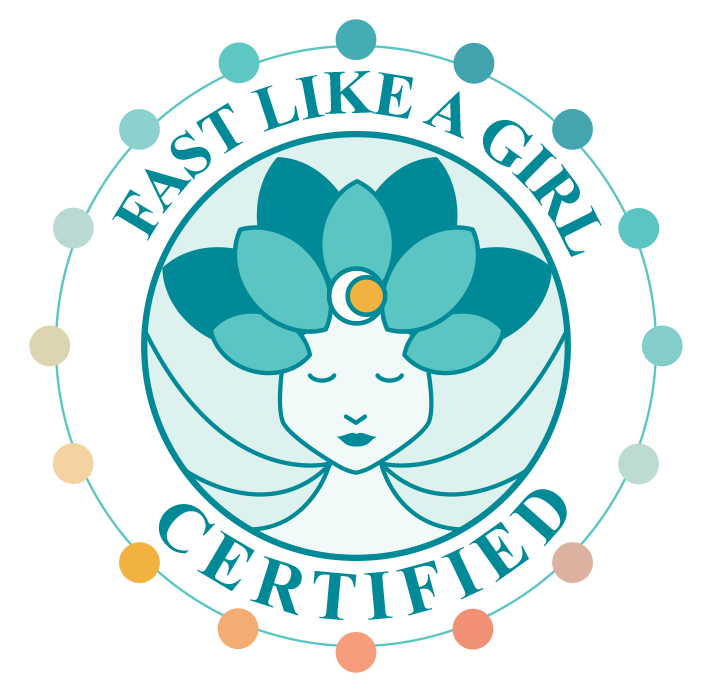Eat Right 4 Your Type
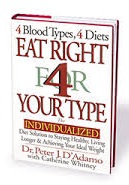 You may have heard of this work by Dr. Peter D’Adamo. The book with that title came out in 1996. The work has been developing since then as well.
You may have heard of this work by Dr. Peter D’Adamo. The book with that title came out in 1996. The work has been developing since then as well.
The idea that blood type helps determine your susceptibility to illness and what kinds of illness you are likely to get as well as which foods are healthful for you is an idea whose time has come.
There is so much confusing, and often conflicting, information about nutrition both in researched studies and in general literature. This has created an overwhelm for health-conscious individuals. It is a result of the “one size fits all” mentality.
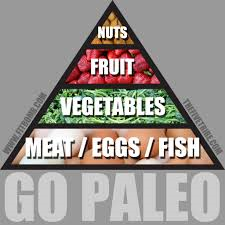 Complex carbs are good, then carbs are bad, or meat is bad, then eat Paleo like our hunter-gatherer ancestors. Everyone is assumed to be the same, ignoring individual characteristics of people. After all, aren’t we all human?
Complex carbs are good, then carbs are bad, or meat is bad, then eat Paleo like our hunter-gatherer ancestors. Everyone is assumed to be the same, ignoring individual characteristics of people. After all, aren’t we all human?
In addition, we have been conditioned to think that chicken is healthier than beef and other meats. Not for everybody. Chicken is a poison to blood type B, and can contribute to cardiovascular disease. And for blood type O, it is not the meat but the grains that lead to heart disease.
Blood type works because each individual is able to follow a clear, logical, scientifically researched and certified dietary blueprint based on the cellular profile related to your blood type.
If you follow your Blood Type Plan carefully, you can
 Avoid many common viruses and infections
Avoid many common viruses and infections- Lose weight as your body rids itself of toxins and fat
- Fight back against life-threatening diseases such as cancer, cardiovascular disease, diabetes, and liver failure
- Avoid many of the factors that cause rapid cell deterioration, this slowing down the aging process
- Zero in on the health and nutrition information for your exact biological profile
- Make choices about your diet, exercise regimen, general health
A Powerful Tool
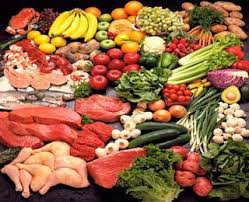 The Blood Type Diet provides you with a powerful tool for making informed choices every time.
The Blood Type Diet provides you with a powerful tool for making informed choices every time.
The average person eats about 25 foods. There are about 200 foods listed for each blood type that are safe to eat. There are many foods that are common to more than one blood type, so when eating with others, you do not have to cook separate meals. More often, the vegetables can be the same, then add in a protein according to your blood type.
The blood type diet is a specific lectin diet. For information about lectins, see the blog post One Man’s Food . . .
Susceptibility to Disease
People with different blood types have distinct characteristics in the digestive and immune systems. Therefore, it can provide a powerful perspective on susceptibility to disease.
Blood type Strengths
- Type O’s have a hardy digestive tract and strong immune system creating a natural defenses against infections. Their system is designed for efficient metabolism and preservation of nutrients.
- Type A’s adapt well to dietary and environmental changes. This preserves and metabolizes nutrients more easily.
- Type B’s tend to have a strong immune system. They are versatile to adapt to dietary and environmental changes. Their nervous system is usually balanced.
- Type AB’s adapt well to modern conditions. They have highly tolerant immune systems. They combine benefits of type A and type B
Blood type Weaknesses
- Blood type O’s in general have intolerance to new dietary and environmental conditions. Their immune system can be overactive and attack itself.
- Blood type A’s in general have a sensitive digestive tract. Their vulnerable immune system leaves them open to microbial infection.
- Blood type B’s have no natural weaknesses. However, if they eat incompatible foods and in other ways create an imbalance, they have a tendency toward auto-immune conditions and rare viruses.
- Blood type AB’s are a combination of type A and type B. They can have a sensitive digestive tract and tendency for over-tolerant immune system, allowing microbial infection.
Specific disease susceptibilities
Asthma, hay fever, and other allergies: Type O
Arthritis and other inflammatory diseases: Type O
Auto-immune disorders such as Lou Gehrig’s disease, lupus, multiple sclerosis: Type B
Blood clotting disorders: Type O
Chronic Fatigue Syndrome: Type B
Diabetes, type I: Type A and Type B
Heart disease: Type A and Type B and Type AB
Liver and Gall Bladder disorders: Type A
Thyroid, low production: Type O
Ulcers: Type O
Snapshot Diet Profile
Type O
 High protein: meat eaters: beef, buffalo, venison, mutton, poultry but no pork. Most fish.
High protein: meat eaters: beef, buffalo, venison, mutton, poultry but no pork. Most fish.
Severely restrict dairy products, but butter and goat cheese is fine.
Pumpkin seeds and walnuts beneficial, but avoid peanuts, cashews, brazil nuts, pistachios.
A variety of vegetables, but no potatoes, eggplant, cabbage, mustard greens, or corn.
Beneficial fruit includes figs, plums, prunes, but avoid strawberries, blackberries, oranges, tangerines, rhubarb.
Limited: grains, beans, legumes. No whole wheat. No corn. No lentils or navy and kidney beans.
Avoid pepper, vinegar, pickles, ketchup, relish.
Type A
 Vegetarian: Vegetables, tofu, seafood, grains, beans, legumes. Some poultry and fish.
Vegetarian: Vegetables, tofu, seafood, grains, beans, legumes. Some poultry and fish.
Small amounts of fermented dairy, avoiding full fat.
Amaranth and buckwheat as well as other grains, but avoid wheat bread and pasta.
Vegetables are vital. No tomatoes, potatoes, peppers, eggplant, cabbage.
Fruit can be 3 times a day, but avoid bananas, coconut, mangoes, oranges, papayas, plaintain, rhubarb.
Start every day with a glass of fresh squeezed lemon in warm water.
Avoid vinegar, ketchup, mayonnaise, pepper, wintergreen.
Type B
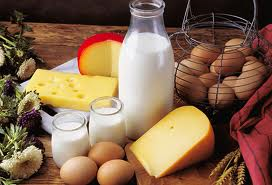 Balanced omnivore: meat, no chicken, thrive on seafood especially deep ocean fish like cod and salmon.
Balanced omnivore: meat, no chicken, thrive on seafood especially deep ocean fish like cod and salmon.
Can enjoy a variety of dairy except ice cream.
Olive, flax and cod liver oil instead of vegetable oils.
Limit nuts and seeds. Most must avoid wheat and corn, favoring rice, oats, and quinoa.
Entirely eliminate tomatoes and ketchup. A variety of other vegetables and fruit are fine.
Type AB
 Mixed diet in moderation: not too much animal protein: turkey and lamb are fine and seafood is an excellent protein.
Mixed diet in moderation: not too much animal protein: turkey and lamb are fine and seafood is an excellent protein.
Some dairy, but not butter and whole milk. Olive oil instead of animal fats.
Limit seeds such as poppy, sesame, pumpkin, sunflower, but a wide variety of nuts except filberts.
Many beans, legumes, and grains, except corn and buckwheat.
Many vegetables, except corn and peppers. Avoid all pickled condiments.
Fruit in variety except the tropical fruits: banana, orange, mango, coconuts.
Begin each morning with a fresh squeezed lemon in warm water.
Key foods to avoid and include for weight loss
Type O
 Avoid: wheat, corn, kidney beans, navy beans, lentils, cabbage, Brussels sprouts, cauliflower, mustard greens.
Avoid: wheat, corn, kidney beans, navy beans, lentils, cabbage, Brussels sprouts, cauliflower, mustard greens.
Aids: kelp, seafood, salt, liver, red meat, kale, spinach, broccoli.
Type A
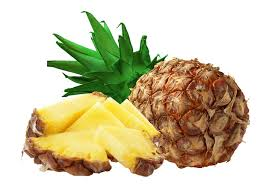 Avoid: meat, dairy, kidney beans, lima beans, wheat.
Avoid: meat, dairy, kidney beans, lima beans, wheat.
Aids: vegetable oil, soy foods, vegetables, pineapple.
Type B
 Avoid: corn, lentils, peanuts, sesame seeds, buckwheat, wheat.
Avoid: corn, lentils, peanuts, sesame seeds, buckwheat, wheat.
Aids: greens, eggs, venison, liver, licorice, tea.
Type AB
 Avoid: red meat, kidney beans, lima beans, seeds, corn, buckwheat.
Avoid: red meat, kidney beans, lima beans, seeds, corn, buckwheat.
Aids: tofu, seafood, dairy, greens, kelp, pineapple
Best Exercise Regimen
 Type O: Intense physical exercise such as: aerobics, martial arts, contact sports, running.
Type O: Intense physical exercise such as: aerobics, martial arts, contact sports, running.
Type A: Calming, centering exercise such as: yoga, tai chi.
 Type B: Moderate physical exercise with mental balance such as hiking, cycling, tennis, swimming.
Type B: Moderate physical exercise with mental balance such as hiking, cycling, tennis, swimming.
Type AB: Calming, centering exercise such as: yoga, tai chi, combined with moderate physical such as: hiking, cycling, tennis.
Starting a Blood Type Diet
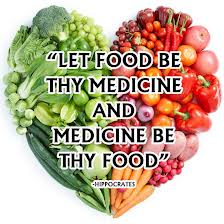 In each food group, there is highly beneficial, neutral, and avoid.
In each food group, there is highly beneficial, neutral, and avoid.
- Highly beneficial – food acts like a medicine
- Neutral – food acts like a food
- Avoid – food that acts like a poison
When starting, the best strategy probably is to eliminate all the foods on the avoid list first. Those who eat only the highly beneficial foods can have a strong detoxification reaction.
To start gradually, reduce the number and frequency of foods on the avoid list while increasing the foods on the beneficial list. And there will be times when you don’t pay attention to what is on which list so you don’t feel deprived and want to rebel.
To take it further, schedule a consult with Dr. Cheryl Kasdorf. She can get you on the road to eating right for your type and further individualizing food recommendations according to your health profile.
Leave a comment below about your experience with the blood type diet!
WANT TO USE THIS ARTICLE IN YOUR NEWSLETTER OR WEB SITE?
You can, as long as you include this complete blurb with it: “Naturopathic Physician Dr. Cheryl Kasdorf is a doctor who listens and has answers with a natural approach that works. She is known as the go-to person to get back your get-up-and-go when it is gone, gone, gone. Get your FREE gift “Dr. Kasdorf’s Health Secrets for Feeling & Looking Great” at drcherylkasdorf.com





